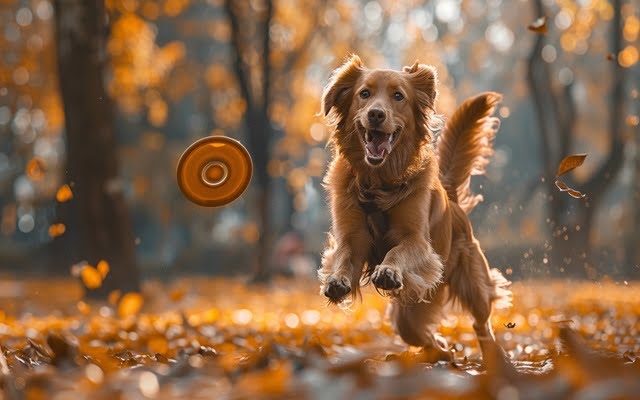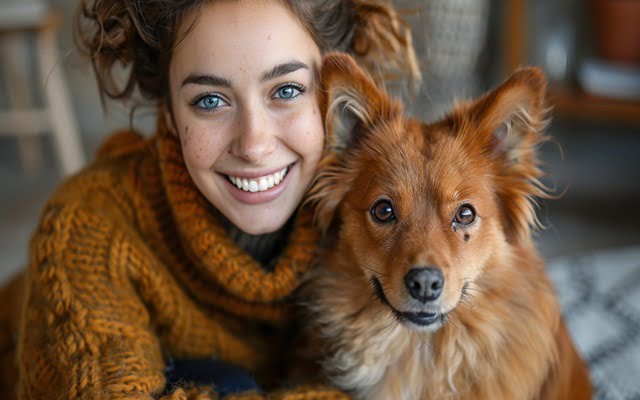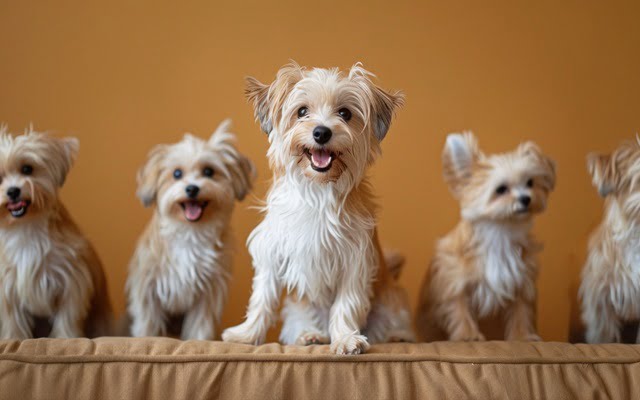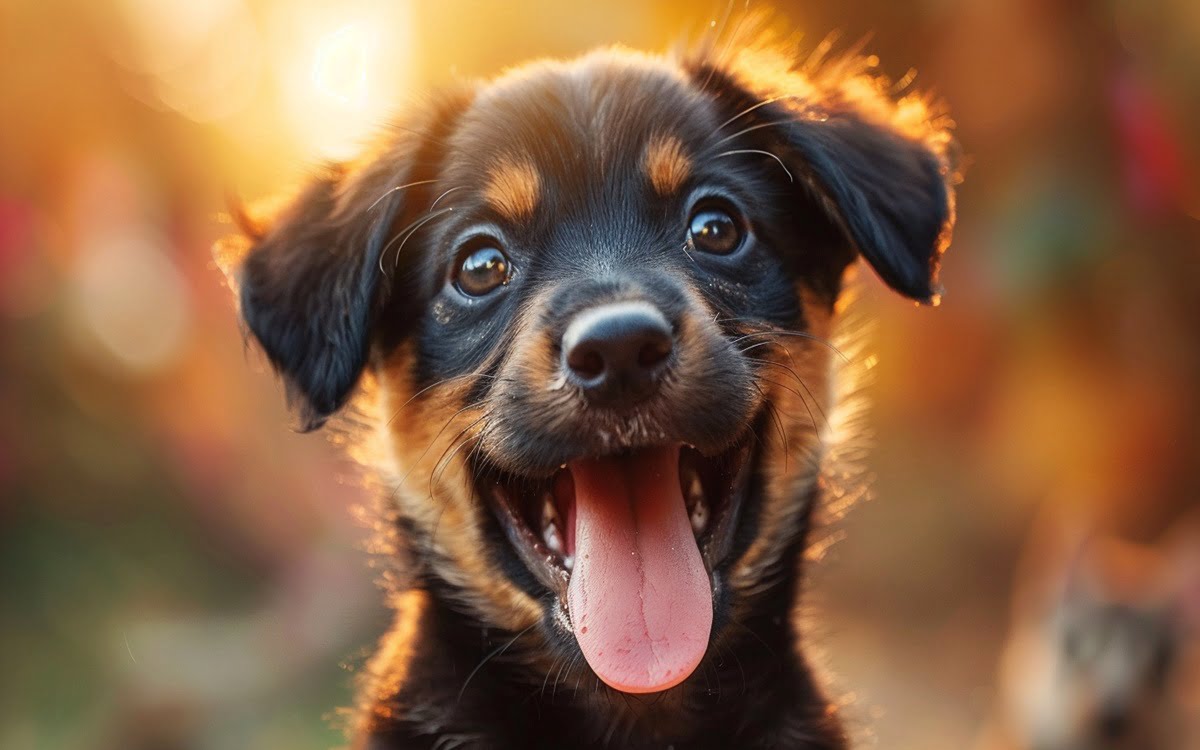Picture this: your pup is in full-on zoomie mode, tongue lolling out, tail a blur, and you hear this funny little panting noise that almost sounds like…giggling? Well, believe it or not, that might just be your dog’s way of laughing! Obviously, it’s not the same as our belly-shaking laughter, but dogs definitely express joy in a way that’s pretty darn adorable.
What Science Says About Dog Laughter
Scientists have been digging into this whole “dog laughter” thing (and honestly, best job ever?), and there’s proof that our pups do have their own unique way of vocalizing happiness. When they make that playful panting sound, it’s acoustically different from regular panting after exercise. It tends to be breathier, higher-pitched, and…well, just happier!
Why Does My Dog Laugh?
Mostly, dogs “laugh” when they’re super excited and having the time of their life. Think ridiculously fun playtime sessions, getting all those zoomies out, or maybe even being reunited with their favorite human. It’s their way of saying, “This is AWESOME!”
Some dogs might be more prone to making this happy panting sound than others. Certain breeds are known for being extra playful, so you might hear it more often from, say, a Golden Retriever than a mellow Basset Hound.

Can I Make My Dog Laugh?
Honestly, there’s no foolproof way to make your dog laugh on command… but that doesn’t mean we can’t try! The whole point of dog laughter is spontaneous joy, so our main goal is to create moments where your pup feels super content and playful. That’s what will give you the best chance of hearing that adorable doggy giggle.
Decoding Dog Communication: Beyond Vocalizations
Dogs are masters of communication, and it goes way beyond happy pants and barks! Understanding their body language and other vocalizations can bring you and your pup even closer.
The Language of Body Language
Think of your dog’s body as a giant billboard flashing their feelings! Here’s what to look for when your dog is feeling playful and happy:
- Play Bow: Ever see your dog crouch down, front end low to the ground, butt sticking up in the air? That’s a classic invitation to play!
- Relaxed Everything: Happy dogs have loose, wiggly bodies, with soft, relaxed ears and a calm tail (that might be wagging excitedly).
- The Zoomies: Those bursts of pure, chaotic energy where they race around like a furry tornado? That’s joy unleashed!
Understanding Play Signals
Dogs have other ways of saying “let’s play!” besides the play bow. Keep an eye out for:
- Bouncy, exaggerated movements
- Gentle swats with their paws
- Mouthing (without too much pressure)
Beyond Laughter – Other Happy Sounds
While the playful panting is a sign of pure joy, dogs use other sounds to show their happiness:
- Excited whines: These are sometimes paired with those bouncy play signals
- Soft, breathy “sighs”: A sign of pure contentment as they settle down from a fun session

Tailoring Your Approach to Your Dog
Every dog is an individual, and they all communicate slightly differently! Take the time to learn about your pup’s unique “vocabulary” of happy sounds and body language. You might discover that your dog has a special way of showing they’re ready to play that only you can recognize!
Techniques to Spark Playful Vocalizations
While you might not be able to make your dog laugh at will, you can create an environment where those happy pants are more likely to happen. Let’s focus on playtime, laughter yoga, and the power of positive reinforcement!
The Power of Play
Dogs absolutely need regular playtime for both their physical and mental health. Not only does it tire them out (in a good way!), but it’s a key way they bond with us and express their natural instincts – and that’s where the happy sounds come in! Here are some ideas:
- Fetch with a Twist: Instead of just throwing a ball, vary the distance and direction. Hide the toy for some added fun!
- Tug-of-War Time: A classic for a reason! Choose a sturdy rope toy and let your pup channel their inner predator (gently, of course).
- Puzzle Power: Make mealtime fun and mentally stimulating! Put their kibble in a puzzle feeder to really get them engaged.
Laughter Yoga for Dogs
Okay, hear me out on this one. Laughter yoga is a thing for humans, and the idea is that even faking laughter can boost your mood. Well, there’s a version for dogs too! It’s about making playful noises and mimicking your dog’s happy panting. Sometimes, they’ll start mimicking you back, leading to a delightful feedback loop of joyful sounds.
Positive Reinforcement Training for Playful Communication
Remember that treats, praise, and all-around positive attention are your best friends when it comes to teaching your dog anything. Here’s how to apply it to those happy pants:
- Be Observant: Pay attention to when your dog makes that playful panting sound naturally.
- Reward Instantly: As soon as you hear it, give them a tiny treat and lots of praise! Use a happy, excited voice.
- Keep it Fun: Don’t turn it into a strict training session. Keep things playful and lighthearted!
Unique Content Alert: Laughter yoga is often overlooked when searching for ways to encourage playful dog vocalizations online – a great opportunity to make your article stand out!

Conclusion
Understanding your dog’s happy sounds – those joyful pants and playful whines – is all about strengthening the bond between you and your furry best friend. Whether you succeed in encouraging your pup to “laugh” on command or not, here’s what really matters:
- Be Patient: Some dogs are just naturally more vocal than others – that’s okay! Learning to read your pup’s unique body language is equally important.
- Focus on Play: Dedicate time every day to engage with your dog in a way they truly enjoy, whether it’s fetch, a relaxing belly rub session, or a sniffing adventure around the neighborhood.
- Love and Laughter: Above all, shower your dog with love! Their happiness will shine through in all sorts of ways – those adorable, playful panting noises might just be one of them.
FAQ
Can dog laughter be contagious?
While there’s no hard scientific proof that our own laughter will make our dogs start panting along, there’s definitely something to this! Dogs are incredibly tuned in to our emotions, and our joy becomes their joy. So, if you’re feeling playful and show your dog how much fun you’re having, they may very well respond with their own version of laughter. It might not always work, but it’s a wonderful way to deepen your bond and have a giggle-filled time together!
My dog only “laughs” when stand in front of the door. Is that normal?
Absolutely! Just like humans, dogs have their unique personalities and favorite ways to play. If your dog tends to get the playful pants going during fetch sessions, or when wrestling with another dog, that’s their personal “happy place.” Pay attention to what gets your dog most excited – those times are perfect for hearing that joyful sound.
Do certain dog toys or games make laughter more likely?
Definitely! Think about what gets your dog’s tail wagging the hardest. Do they go wild for a squeaky toy? Lose their mind during a tug-of-war session? Experiment with different games and toys to see what sparks those fun panting noises. Pro-tip: anything that involves a little bit of unpredictability, like a ball that bounces erratically or a toy that dispenses treats randomly, can get those zoomies and happy pants going.

My job is to make sure every fact is right and every article is a joy to read. I’m kind of like a dog trainer for information – I make it behave!

